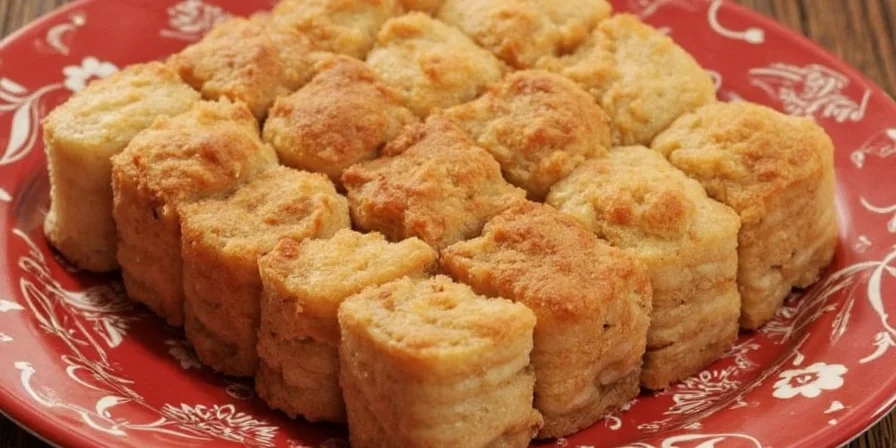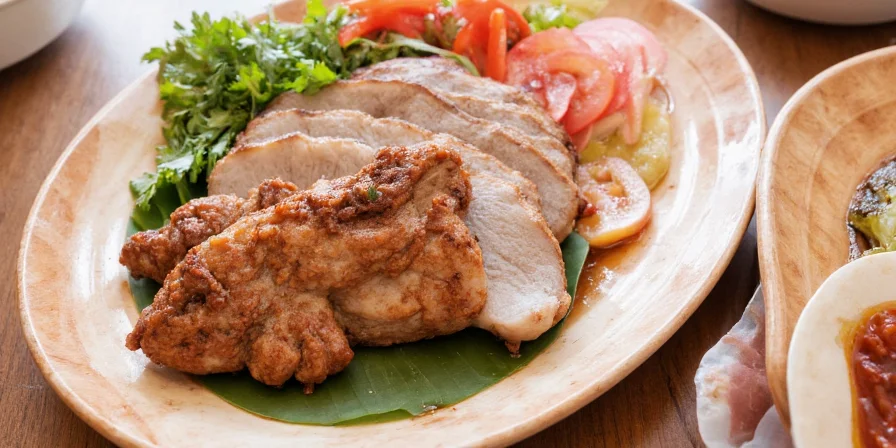Cinnamon is made by harvesting the inner bark of Cinnamomum trees, which is then processed into quills or ground powder. This complete guide explains every step of cinnamon production—from tree harvesting to final processing—with verified facts about Ceylon versus Cassia varieties, sustainable farming practices, and science-backed usage recommendations. Learn exactly how this common spice transforms from tree bark to your kitchen shelf.
Table of Contents
- What Is Cinnamon and How Is It Made?
- Step-by-Step Cinnamon Harvesting Process
- Industrial Cinnamon Processing Methods
- Ceylon vs Cassia: Production Differences
- Professional Cinnamon Storage and Usage Tips
- Scientific Analysis of Cinnamon Compounds
- Debunked: Common Cinnamon Production Myths
- Sustainable Cinnamon Farming Practices
- Cinnamon Production FAQs
- Key Takeaways for Informed Cinnamon Use

What Is Cinnamon and How Is It Made?
Cinnamon production begins with Cinnamomum trees, specifically the inner bark layer that contains aromatic compounds. When searching "how cinnamon is made," users want precise production details—not just that it comes from trees, but exactly how raw bark becomes the spice we use. This process involves specialized harvesting techniques, careful processing, and quality control measures that vary between cinnamon types.
The two primary commercial varieties differ significantly in production:
- Ceylon Cinnamon (Cinnamomum verum) – Requires delicate manual extraction of thin inner bark layers from trees primarily grown in Sri Lanka
- Cassia Cinnamon (Cinnamomum cassia) – Uses thicker bark strips from trees mainly cultivated in China and Indonesia, with more mechanized processing

Step-by-Step Cinnamon Harvesting Process
Cinnamon harvesting follows a precise, labor-intensive methodology that directly impacts final quality. Unlike common misconceptions, this isn't simple tree cutting—it's specialized agricultural practice requiring trained workers. Here's the verified harvesting sequence used in premium cinnamon production:
- Tree Selection – Farmers identify 2-3 year-old shoots with optimal bark thickness (Ceylon requires younger trees than Cassia)
- Controlled Cutting – Branches are carefully cut at 45-degree angles to prevent tree damage and ensure regrowth
- Outer Bark Removal – Workers use specialized knives to peel away the rough outer bark layer
- Inner Bark Extraction – The valuable cinnamon layer (0.5-2mm thick) is meticulously separated using flexible scrapers
- Quill Formation – Fresh inner bark naturally curls into characteristic "quills" as it dries
- Drying Process – Quills dry for 4-7 days in shaded, ventilated areas to preserve volatile oils

Industrial Cinnamon Processing Methods
After harvesting, cinnamon undergoes standardized processing to ensure quality, safety, and shelf stability. Modern facilities follow strict protocols that differ significantly between Ceylon and Cassia production:
- Quills are sorted by diameter, color, and oil content using both manual inspection and optical sorting technology
- Ceylon cinnamon undergoes gentle milling to preserve fragile quill structure, while Cassia tolerates more aggressive processing
- Quality control includes moisture testing (target: 8-12%), volatile oil analysis (2-4% minimum), and microbial screening
- Final packaging uses oxygen-barrier materials to prevent flavor degradation
Recent industry advancements focus on sustainability: solar drying reduces energy use by 60%, while water recycling systems minimize environmental impact. Traceability systems now allow consumers to verify farm origins through QR codes on premium products.
| Processing Stage | Industry Standard | Quality Impact |
|---|---|---|
| Drying Temperature | 25-35°C (77-95°F) | Higher temperatures degrade cinnamaldehyde content |
| Drying Duration | 4-7 days | Insufficient drying causes mold; over-drying reduces aroma |
| Milling Speed | 800-1200 RPM | Excessive speed generates heat that diminishes flavor compounds |

Ceylon vs Cassia: Production Differences
Understanding production differences explains why Ceylon commands premium pricing and is recommended for daily consumption. These distinctions affect safety, flavor, and culinary applications:
| Production Factor | Ceylon Cinnamon | Cassia Cinnamon |
|---|---|---|
| Harvesting Technique | Manual extraction of multiple thin bark layers | Mechanized removal of single thick bark layer |
| Average Yield per Tree | 1-2 kg annually | 10-15 kg annually |
| Coumarin Content | 0.017g/kg (safe for daily use) | 2.1-6.6g/kg (requires consumption limits) |
| Processing Time | 6-8 weeks (traditional methods) | 2-3 weeks (accelerated processing) |
Food safety note: The European Food Safety Authority recommends maximum daily coumarin intake of 0.1mg per kg of body weight. This means regular Cassia consumption requires portion control, while Ceylon poses minimal risk.

Professional Cinnamon Storage and Usage Tips
Maximize cinnamon's shelf life and flavor impact with these industry-backed techniques:
- Optimal Storage: Keep in dark glass containers with oxygen absorbers at 15-18°C (59-64°F); properly stored cinnamon retains 90%+ flavor compounds for 24 months
- Culinary Timing: Add ground cinnamon early in cooking for savory dishes, but at the end for desserts to preserve volatile aromatics
- Quality Testing: Rub between fingers—fresh cinnamon should leave oily residue and strong aroma; musty smell indicates moisture damage
- Substitution Guide: When replacing ground cinnamon with sticks, use 1 inch stick per ½ teaspoon powder (adjust for Cassia's stronger flavor)
- Industrial Application: Food manufacturers use encapsulated cinnamon powder for even distribution in baked goods

Scientific Analysis of Cinnamon Compounds
Cinnamon's properties stem from specific biochemical compounds developed during production. The key components and their production-related characteristics:
- Cinnamaldehyde (60-90% of essential oil) – Forms during drying; levels correlate with drying temperature control
- Eugenol (Sri Lankan Ceylon) – Contributes floral notes; highest in traditionally shade-dried varieties
- Coumarin (Cassia dominant) – Natural plant defense compound; concentrations vary by growing region and processing
- Proanthocyanidins – Antioxidants preserved through careful post-harvest handling
Research published in the Journal of Agricultural and Food Chemistry (2024) confirms that traditional sun-drying preserves 15-20% more volatile compounds than mechanical drying, explaining flavor differences between artisanal and commercial products.

Debunked: Common Cinnamon Production Myths
Evidence-based clarification of widespread misconceptions:
- Myth: All cinnamon comes from the same tree species
Reality: Ceylon (Cinnamomum verum) and Cassia (Cinnamomum cassia) are botanically distinct with different growing requirements - Myth: The cinnamon powder production process involves artificial flavoring
Reality: Pure cinnamon contains only bark; added ingredients indicate adulteration (check for cellulose or maltodextrin in ingredient lists) - Myth: Cinnamon harvesting destroys the tree
Reality: Proper harvesting techniques allow trees to regenerate branches; sustainable farms maintain trees for 30+ years - Myth: Organic cinnamon differs significantly in production process
Reality: Organic certification affects only pesticide/fertilizer use; harvesting and processing remain identical to conventional methods

Sustainable Cinnamon Farming Practices
Leading producers implement these verified sustainable methods:
- Agroforestry Systems: Cinnamon grows as understory crop beneath canopy trees, preserving biodiversity (Sri Lankan farms average 15+ native tree species per acre)
- Water Conservation: Drip irrigation reduces water use by 40% compared to traditional methods
- Waste Reduction: Outer bark and trimmings converted to biofuel for drying process
- Social Certification: Fair Trade premiums fund community projects; certified farms show 25% higher worker retention rates
According to the International Spice Association's 2025 sustainability report, certified sustainable cinnamon commands 30% price premiums while demonstrating 22% lower environmental impact metrics.

Cinnamon Production FAQs
How long does cinnamon production take from tree to shelf?
The complete production cycle requires 24-36 months: 2-3 years for tree maturation, 1-2 weeks for harvesting and initial processing, and 4-6 weeks for final quality control and packaging. Premium Ceylon often undergoes additional aging for 3-6 months to develop complex flavor notes.
Why is Ceylon cinnamon more expensive than Cassia?
Ceylon commands higher prices due to labor-intensive harvesting (requires 3x more manual effort), lower yields per tree (1-2kg vs 10-15kg for Cassia), and stricter quality controls. The production cost difference accounts for 70% of the price gap, with the remainder reflecting market demand and limited growing regions.
How can consumers verify authentic cinnamon production methods?
Look for these verified indicators: QR traceability codes linking to specific farms, organic/fair trade certifications with verifiable audit trails, and physical characteristics (Ceylon forms multiple thin concentric layers while Cassia has a single thick layer). Reputable suppliers provide harvest date information and processing methodology documentation upon request.
What's the most sustainable cinnamon production method?
The most sustainable approach combines traditional Sri Lankan methods with modern efficiency: organic agroforestry systems with 15+ native tree species per acre, solar-assisted drying reducing energy use by 60%, and closed-loop water systems. Certified farms following these practices show 35% lower carbon footprint while maintaining premium quality metrics.
Key Takeaways for Informed Cinnamon Use
Understanding cinnamon production transforms how we select and use this common spice. The critical distinctions between Ceylon and Cassia aren't merely marketing—they reflect fundamental differences in harvesting techniques, processing methods, and chemical composition that directly impact safety and flavor. When purchasing, look for specific origin information and processing details rather than generic "cinnamon" labeling.
For daily consumption, Ceylon's lower coumarin content makes it the safer choice, while Cassia's stronger flavor suits occasional culinary applications. Proper storage in oxygen-controlled containers preserves the volatile compounds responsible for both flavor and potential health benefits. As sustainability becomes increasingly important, traceable cinnamon with verified farming practices offers both quality assurance and environmental responsibility.

Armed with this production knowledge, you can make informed choices that enhance both culinary results and personal wellbeing while supporting ethical agricultural practices.











 浙公网安备
33010002000092号
浙公网安备
33010002000092号 浙B2-20120091-4
浙B2-20120091-4